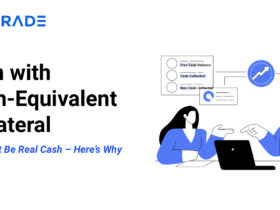Infosys, the infamous Information technology giant is making headlines in the news with the largest buyback in its history. On September 11, 2025, the company announced a buyback of ₹18,000 crore (approximately USD 2 billion) to repurchase nearly 10 crore of its shares which amounts to 2.41% of its shares. The price for auditing shares for the share buyback is ₹1,800 per share, which is a premium of approximately 19% compared to the stock closing price the day before the announcement.
The repurchase will be done through a tender offer process, which allows shareholders the ability to sell the share back to the company at the fixed price. However, questions arise from this news:
- What does it mean to you?
- What is a buyback?
- Why do companies buy back stock?
- What does it mean for shareholders of Infosys?
What is a buyback?
A share buyback is a company repurchasing their own stock that was previously issued to the public as shares. This means, the company is putting capital back in the company’s investors’ hands while decreasing the amount of shares issued or in circulation. A reduction in shares means an increase in ownership per share in the company.
Reasons why companies conduct buybacks:
There are some logical reasons why companies usually announce their shares buyback,
- Increase earnings per share (EPS): If a company has the same earnings and is buying back shares, final share count will be lower. The EPS looks better, which can encourage new shareholders to want to buy the stock.
Explanation:
EPS = Company’s profit / Number of shares
- Let’s say a company enjoys a net profit of ₹1,000 crore in a single year.
- Before the buyback, the total number of shares of the company is 100 crore.
- So EPS = 1000 ÷ 100 = ₹10 per share.
- After that, the company decides to buy back 20 crore shares. Therefore, there are now only 80 crore shares.
- The profit remains unchanged = ₹1,000 crore.
- So EPS = 1000 ÷ 80 = ₹12.5 per share.
- So, without actually increasing the company’s profit, the share value has increased
- Signalling confidence – management is saying effectively “we believe our stock is undervalued” and hence we are buying it back signalling a stronger confidence in their company’s growth and numbers
- Efficient cash utilization: When a company has strong levels of cash and only few opportunities for growth, it can return cash to shareholders via buyback.
- Prevent dilution: Buybacks typically offset the dilutive effect of stock options issued to employees.
- For Infosys, the company has manageable levels of cash and believes that the buyback will help create long term value for shareholders.
What does the buyback mean for shareholders?
- For shareholders who tender their shares: Shareholders are guaranteed to exit at a higher price (in this case ₹1800). This is a guaranteed instant return over the market price.
- For shareholders who do not tender their shares: The percentage ownership of the company does increase slightly because of the lower number of outstanding shares. Over time, this can create more attractive EPS and or an attractive multiple on earnings.
- Face value remains the same: The face value of Infosys remains at ₹5 per share and a buyback does not change that.
- Price of derivatives (F&O) contracts: There are also no changes to the structural make up or face value of F&O contracts. Option premiums could change temporarily while the stock trends in response to the buyback.
What happened to Infosys stock after the announcement?
As expected, the stock reacted favourably. After the announcement, Infosys shares surged 2-3% over the next few sessions, which investors viewed as a show of confidence from the management, as they can now reward shareholders and provide value immediately.
In saying this, a buyback will not overcome the larger challenges. The IT sector is already faced with slower global spending, greater scrutiny of tech companies in the U.S., and the consuming pressure to invest in artificial intelligence and digital platforms.
The Bigger Picture: The Global Headwinds for IT :
Infosys, like many of its counterparts, is operating in a challenging global environment:
U.S.-sanctions and changes in their policies can also destabilize outsourcing deals and tech exports.
The HIRE Act 2025 (aimed at tightening work visa and hiring regulations in the U.S.) could also increase the costs for Indian IT firms that recruit heavily overseas.
The race for AI and innovation for client spending is also changing budgets away from other technology budgets to AI and cloud transformation. Indian IT majors must invest a ton in this area to remain a competitor.
What some analysts are questioning here, isn’t so much whether it is right to do buy-backs, but whether the firm should actually be spending billions on buybacks, instead of investing more capital into R&D and mergers and acquisitions. It is a balancing act for Infosys.
Conclusion:
The ₹18,000 crore Infosys buyback is good news for shareholders in the short term. It is an option to book profits at a premium with multiple financial numbers dramatically enhanced. For long-term investors, it’s also a hopeful sign of financial health.
But on a go-forward basis, the test is before it. In the world with uncertainties led by international events, U.S. regulatory challenges, and the AI-driven world, the future value proposition for the company will need more than buybacks to be considered a worthy opportunity. In the end, the company’s capacity for innovation, adaptation to a changing world, and, significantly, responsible investment will determine whether shareholder reward today leads to sustainable growth tomorrow.
Source: The Economic Times, Mint, The Indian express, Investopedia
Holding Infosys shares in Flattrade. Watch video to apply for Buyback in Flattrade wall




